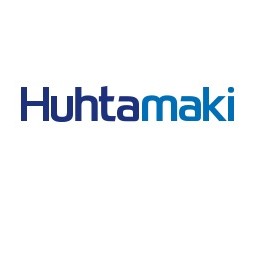One of the leading companies in the world packaging industry: Finnish Huhtamaki
Founded in 1920 in Kokkola, Finland, Huhtamaki is among the world leaders in the disposable products market. Over the past century, it has made many innovations in the packaging industry and pioneered new technologies. So who founded this company; how did it grow:

Huhtamaki Industries was founded in 1920 in Kokkola, Finland by Heikki Huhtamaki. Although the main field of activity of the company was confectionery, a great expansion occurred in the field of activity shortly after its establishment. As a matter of fact, in this period, the effects of the First World War were felt strongly in this Northern European city as well as in the rest of the world, and new investments were encouraged. With the effect of these incentives, the company has strengthened its presence in a wide variety of fields, from the food sector to health services, from the field of advertising and electronics to women's wear, just 10 years after its establishment.
Heikki Huhtamaki (1900-1970)
In the 1930s, when the Great Depression drove many companies into bankruptcy in Europe, Huhtamaki bought and incorporated many well-known companies in the confectionery field. Moreover, companies that had a difficult time due to the bad course in the pharmaceutical and beverage industry started to gather under the body of Huhtamaki in time. As a result of the great recession in the market, production in these sectors had come to a standstill. Huhtamaki, on the other hand, managed to develop a strong organizational ability in marketing and sales as well as production over the years. In this way, its growth continued in other areas during the Great Depression.
One of the main reasons for Huhtamaki's organizational success was the fact that it gave great importance to domestic and foreign relations networks since its foundation years. These networks, which he first developed in the field of confectionery, spread to other sectors over time and played an important role in the rapid growth of the company. These networks, strengthened by social relations and aid funds as well as business relations, enabled a Finland-based company to conduct market research in many regions of Europe, identify consumer needs and develop solutions suitable for these needs.
Huhtamaki in the World Market
In the early 1930s, the company's headquarters moved from Kokkola to Turku. During this period, Turku was a meeting place for merchants, bankers and industrial giants who were not affected much by the Great Depression. These Swedish-speaking circles wanted to finance many investments in the economic and social fields in Europe in order for Finland to rise to an important position in the world market. They attached importance to acting together in order for Finland to get rid of the traditional city economy and rise to a strong position in the world market.
Towards the end of the 1930s Huhtamaki strengthened its presence in both the Finnish and European economy. As a result of the economic and social relations it established, it rose to the position of leadership and rapidly developed its fields of activity. Its support to the fields of education and culture paved the way for many innovations in the sector. By supporting new R&D projects, it not only had a product range suitable for the needs of the market, but also made significant contributions to employment.
In the 1960s, Huhtamaki started operating its first packaging factory in Finland that made tin cans. The packaging unit soon began producing paper and plastic cups, and these products received greater attention than tin cans. On top of that, it focused on consumer packaging and accelerated its R&D studies in the field of rigid packaging. The shaped fiber products he developed, packaging products, and disposable products for the hot and cold beverage market attracted great attention in the world market.
In the 1970s, Huhtamaki completely renewed its technical infrastructure used in packaging production and started to increase the number of production facilities in non-European geographies. In this technical renewal process, it also pioneered many innovations in the sector. It provided diversity in the types of raw materials in the plastic and paper packaging alternatives it developed. It found creative solutions by trying different raw materials for different needs.
For example, the PP raw material it used had a wide end-use temperature range and was suitable for microwave use. Disposable cups made of PS raw material had a high transparency feature and offered an effective solution to hygiene needs. It was also useful for greasy and chemical products that were resistant to physical effects, had a moisture barrier. Glasses produced from PET raw material had a much higher hardness compared to their counterparts. These changes in the nature of the materials used in the food supply industry accelerated Huhtamaki's growth process in line with the growth in the consumer market.
By the 1980s, however, Huhtamaki had grown into a gigantic conglomerate of about 20 companies that were virtually unrelated to each other. This overgrowth of the company brought management problems with it. In 1988, the company set a strategic goal of limiting its fields of activity until 2000 and becoming a world leader by concentrating on one or a few areas. The company, which has a very large market volume in three areas, mainly confectionery, pharmaceutical and packaging areas, first started to withdraw from the confectionery field. Many of the production facilities were sold to Finnish-based businesses. The withdrawal of the company from the pharmaceutical industry took 1996. Thus, it concentrated on the packaging industry and focused on increasing its market share in this field.
This strategic transformation of Huhtamaki has ensured consistent and solid growth in the packaging industry. Since the 1990s, the company left behind the uncontrolled growth process and entered a planned growth process. While withdrawing from other sectors, it continued to strengthen its growth in the packaging industry through acquisitions. In 1998, it acquired Sealright, one of the leading companies in the packaging industry in the USA. A year later, it strengthened its position in the market by purchasing 14 packaging companies, including Dutch packaging giant Van Leer.
An important turning point in Huhtamaki's brand history took place in 2009; With subsidiaries around the world, the decision to withdraw from industrial plastic packaging production remained. After this date, the companies within the group focused their product range on paper products used in food service and other complementary products. Today, Huhtamaki is now expanding its product range with service materials made of PS, PP and PE instead of industrial plastic packaging.
Huhtamaki's production facilities are spread over 6 continents of the world today. It has 78 production facilities, 24 sales offices and nearly 13 thousand employees in 34 countries. The net sales figure in 2016 is 2.9 billion Euros.

